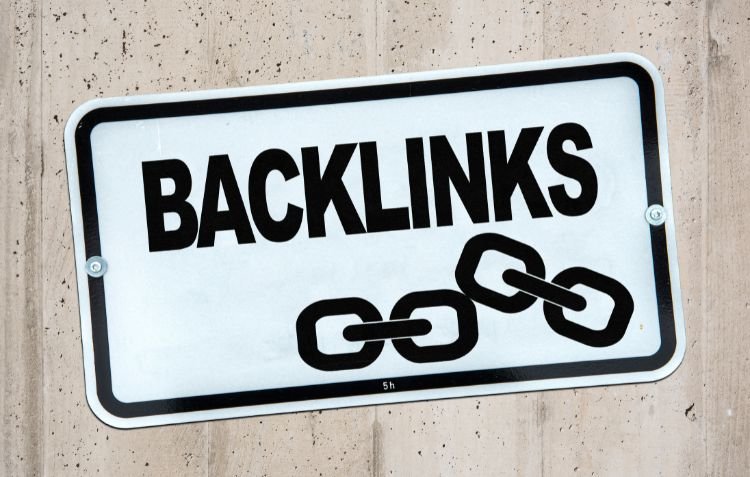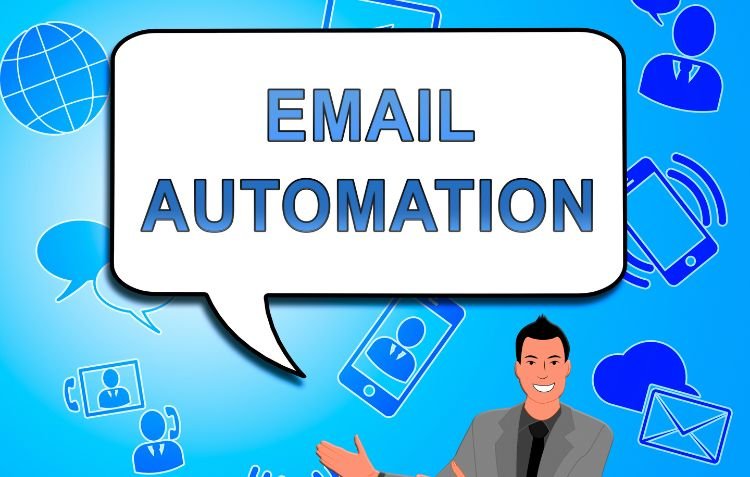Imagine you’re signing up for an exclusive webinar, but before accessing the event, you’re faced with a long-form asking for details you’ve already provided. Frustrating, right? This is a common reason why users abandon signups, leading to lower conversion rates and missed opportunities for businesses.
This is where prepop email lead capture comes in. By automatically filling form fields with known user information—such as their name and email address—it eliminates unnecessary friction, streamlining the signup process and improving user experience. As a result, businesses see higher completion rates, better engagement, and a noticeable boost in click-through rates (CTR).
But how exactly does it work, and how can you set it up for your marketing campaigns? In this guide, we’ll walk you through a step-by-step process on how to set up prepop email lead capture, explore best practices, and share strategies to maximize your results. Let’s get started.
Understanding Prepop Email Lead Capture
Capturing leads effectively is crucial for businesses, but traditional signup forms often create friction, discouraging users from completing them. Prepop email lead capture simplifies this process by automatically filling form fields with a user’s known information, reducing manual input and boosting engagement. This approach enhances user experience while improving data accuracy and conversion rates.
What Is Prepop Email Lead Capture?
Prepop email lead capture is a technique that pre-fills form fields—such as email, name, and phone number—based on existing user data. This can be done using URL parameters, cookies, or CRM integrations. By eliminating the need for users to re-enter information, businesses can significantly increase form completion rates and minimize abandonment.
Key Benefits
- Reduced Friction: Users complete forms faster, reducing drop-offs.
- Improved Data Accuracy: Eliminates typos and ensures consistency across platforms.
- Higher CTR and Conversions: A smoother experience leads to better engagement and higher conversion rates.
Example Scenario
A returning visitor clicks a personalized email link promoting a webinar. Instead of manually entering their details, they land on a pre-filled signup form with their name and email already in place. This frictionless experience encourages completion, leading to better lead generation results.
Step-by-Step Guide to Setting Up Prepop Email Lead Capture
Implementing prepop email lead capture requires selecting the right tools, creating pre-populated links, and mapping form fields correctly. Below is a structured approach to setting up and optimizing your lead capture process.
A. Selecting the Right Tools
To enable prepop email lead capture, businesses need email marketing platforms and CRM tools that support dynamic form prepopulation. Key features to consider:
- CRM Integration: Seamless syncing with databases (e.g., HubSpot, Salesforce).
- Dynamic Content Support: Ability to personalize forms based on user data.
- Security Compliance: Built-in GDPR/CCPA data protection measures.
Recommended Tools:
- HubSpot – Best for CRM-integrated prepop lead capture.
- Mailchimp – Ideal for automated email campaigns with pre-populated forms.
- Brevo (formerly Sendinblue) – Great for budget-friendly lead capture automation.
B. Creating Prepopulated Links
Prepopulated links are dynamic URLs containing user-specific data parameters. When clicked, they auto-fill form fields, streamlining the submission process.
How to Generate Prepop Links:
- Identify Parameters – Determine the fields to prepopulate (e.g., email, first_name).
- Append Parameters to the URL – Use query strings like:
https://example.com/signup?email=johndoe@example.com&first_name=John
- Ensure Data Security – Encode sensitive data or use token-based authentication instead of plaintext parameters.
Example Use Case: A company sends a personalized email campaign with a signup link like:
https://example.com/offer?email=jane.doe@example.com
Clicking this link directs Jane to a form with her details already filled in, eliminating unnecessary steps.
C. Mapping Form Fields

For prepop links to function properly, form fields must be mapped correctly to their respective URL parameters.
Steps to Map Fields:
- Match URL Parameters with Form Input Names – Ensure the form recognizes incoming data. Example:
<input type=”email” name=”email” value=”<?php echo $_GET[’email’]; ?>”>
- Test Across Devices and Browsers – Verify that auto-fill functionality works consistently.
- Ensure Fallback Mechanisms – If data is missing, provide default text or placeholders.
By correctly mapping fields and validating data, businesses ensure seamless form submissions, boosting user experience and lead conversion rates.
Advanced Strategies for Optimizing Prepop Email Lead Capture
Setting up prepop email lead capture is just the first step—optimizing it ensures maximum efficiency and conversions. Businesses can enhance their strategies using dynamic content personalization, A/B testing, and compliance with data privacy regulations.
A. Dynamic Content Personalization
Personalization is key to making prepop email lead capture more effective. Instead of just auto-filling basic details like name and email, businesses can dynamically adjust content based on user preferences, location, and past interactions.
How It Works:
- Use CRM data to tailor landing page text, images, and form fields.
- Adjust messaging based on user behavior (e.g., showing a returning customer exclusive offers).
- Implement conditional logic to display different CTAs depending on user segment.
Case Study: A national restaurant chain used dynamic content to offer location-based discounts. When a user clicks an email link, the prepopulated form includes their nearest restaurant location and a personalized discount code. This strategy led to a 20% increase in reservations.
B. A/B Testing and Analytics
Testing different form designs, layouts, and pre-population methods helps identify what works best.
A/B Testing Approach:
- Compare prepopulated vs. non-prepopulated forms to measure conversion differences.
- Experiment with button colors, form field order, and prefilled vs. empty fields.
- Test different CTA wording: “Claim Your Offer” vs. “Sign Up Now.”
Recommended Analytics Tools:
- Google Analytics 4 (GA4) – Tracks form engagement and conversion rates.
- Hotjar – Provides heatmaps and session recordings to analyze user interactions.
- HubSpot Analytics – Measures email campaign effectiveness and lead capture performance.
C. Compliance and Data Privacy
Businesses must align with GDPR, CCPA, and other data privacy laws when collecting user information.
Best Practices for Compliance:
- Obtain explicit user consent before auto-filling forms.
- Use secure data storage and avoid exposing personal details in URLs.
- Clearly state how data will be used in the privacy policy.
Pro Tip: Implement a double opt-in process to confirm user data usage permissions, reducing legal risks.
Common Pitfalls and Troubleshooting Tips
While prepop email lead capture improves conversions, improper execution can lead to user frustration, security risks, and outdated data. Below are common pitfalls and how to resolve them.
A. Outdated or Incorrect Data Prepopulation

Issue: If a user’s details have changed (e.g., they updated their email), prepopulating outdated data can cause frustration.
Solution:
- Enable real-time data syncing with your CRM or email marketing platform.
- Use JavaScript-based auto-updates to fetch the latest information dynamically.
- Provide an edit option so users can modify prefilled details if needed.
Example: If a user clicks a prepopulated link but recently changed their email, the system should pull updated records instead of using cached data.
B. Security Concerns with URL Parameters
Issue: Exposing sensitive details (e.g., email addresses) in plain-text URLs can lead to data leaks.
Solution:
- Use hashed tokens instead of raw email addresses (e.g., ?token=abc123 instead of ?email=john@example.com).
- Implement SSL encryption and ensure data transmission follows secure protocols.
- Apply expiration times to prepopulated links to prevent misuse.
Example: Instead of sending a direct email prepop link, generate a one-time-use encrypted token that expires after 15 minutes, preventing unauthorized access.
Real-World Applications and Success Stories
Successful businesses leverage prepop email lead capture to streamline user interactions and maximize conversion rates. Below are two real-world case studies showcasing its impact.
Case Study 1: A Travel Agency Boosts Booking Accuracy and Customer Satisfaction
A mid-sized travel agency noticed a high drop-off rate in its booking forms. Customers often had to re-enter details like their email, phone number, and travel preferences even after prior interactions. (Source)
Solution: The agency integrated real-time data syncing into its CRM, ensuring returning users received prepopulated booking forms with previously provided details.
Results:
- 35% increase in form completion rates.
- Reduced customer frustration, leading to improved loyalty.
- Fewer manual errors, making the booking process smoother.
Case Study 2: Obvi Captures More Leads with a Giveaway Strategy
Obvi, a health and wellness brand, aimed to grow its email and SMS marketing lists. They implemented a free weekly giveaway, directing users to a prepopulated signup form from social media ads. (Source)
Results:
- 2x growth in email & SMS subscribers within a few months.
- Higher CTR and engagement, as users found the signup process effortless.
- Increased revenue from personalized follow-up campaigns.
Conclusion
Prepop email lead capture is a powerful tool for reducing friction, increasing conversions, and improving user experience. By implementing prepopulated forms, dynamic personalization, and security best practices, businesses can capture leads more efficiently while maintaining data integrity.
Now it’s your turn! Start optimizing your lead capture process today by applying these strategies. Whether you’re running email campaigns, improving signup forms, or enhancing CRM integrations, prepop email capture can significantly boost your conversion rates and CTR.
The digital landscape is constantly evolving, and businesses that continuously test and refine their lead generation strategies will see long-term success. Stay informed, track your results, and keep optimizing—your next high-converting campaign starts now!
FAQs
What is prepopulated email lead capture?
It’s a technique where forms automatically fill in a user’s information, like their email address, to streamline the submission process and enhance user experience.
How does prepopulating form fields improve conversion rates?
By reducing the effort required from users during form completion, it minimizes friction, leading to higher submission rates and improved data accuracy.
Is prepopulating form fields secure?
Yes, when implemented correctly. It’s essential to use secure methods, such as tokenization, to protect user data and comply with privacy regulations.
Can prepopulated forms be used in email marketing campaigns?
Absolutely. Including personalized, pre-filled forms in emails can enhance user engagement and increase the likelihood of conversions.
What tools support prepopulated email lead capture?
Platforms like HubSpot, Mailchimp, and Brevo offer features that facilitate the creation of prepopulated forms, integrating seamlessly with your marketing efforts.

Malik Aqeel is a seasoned SEO specialist with 3 years of experience, currently pursuing a BS in Computer Science from the Virtual University of Pakistan. He is dedicated to helping businesses improve their online visibility and shares his knowledge through his blog, Tech Marketing Café, where he covers topics on digital marketing, technology, and business.



